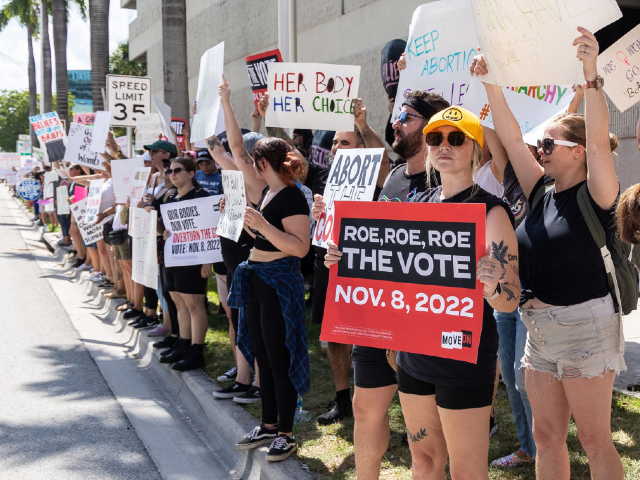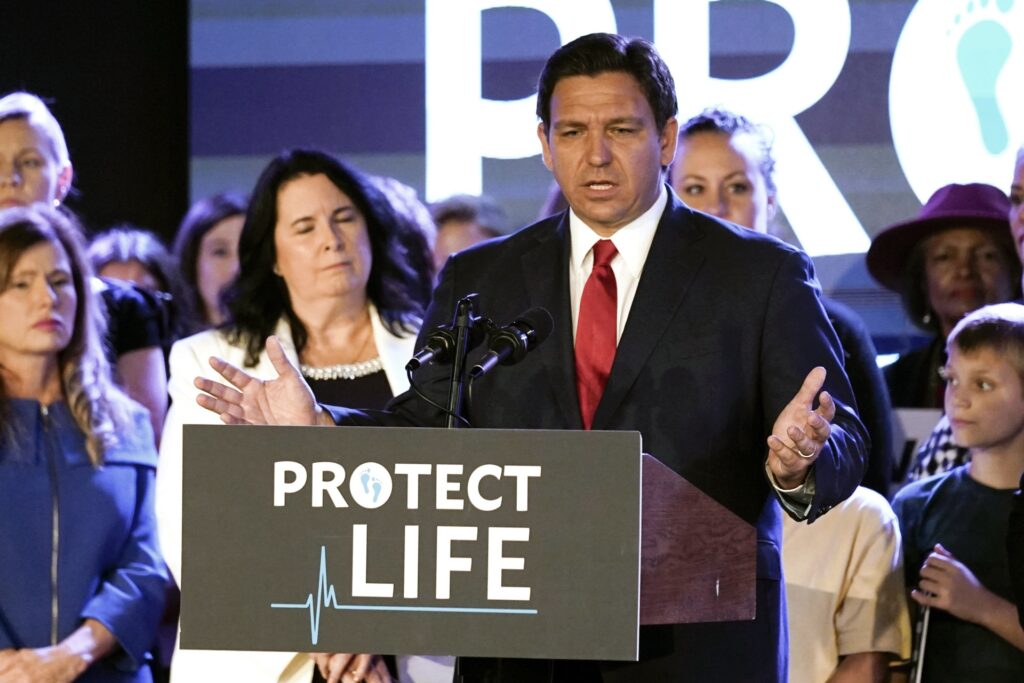Left-wing activists working to put abortion on the ballot this year in Florida have surpassed the number of signatures required by the state to move forward, data from the Florida Division of Elections shows.
As of Sunday, the main sponsor of the initiative, called Floridians Protecting Freedom, collected 911,169 signatures — more than the 891,523 needed to qualify the initiative for the ballot. The total is not official until the secretary of state determines the requisite signatures have been obtained and issues a certificate of ballot position, according to the elections office.
Floridians Protecting Freedom is a coalition of left-wing groups including Planned Parenthood and ACLU of Florida. The language of the initiative states: “Except as provided in Article X, Section 22, no law shall prohibit, penalize, delay, or restrict abortion before viability or when necessary to protect the patient’s health, as determined by the patient’s healthcare provider.” The cited provision allows the state legislature to require parental notification before a minor has an abortion, with the option of a child asking a judge to grant permission.

A pro-abortion rights activist holds a sign at a protest in support of abortion access on July 13, 2022, in Fort Lauderdale, Florida. (John Parra/Getty Images for MoveOn)
The measure, if it makes it to the 2024 ballot, would require 60 percent of voters to approve in order to take effect.
In Florida, abortion is legal up to 15 weeks of pregnancy, although the state Supreme Court is expected to determine the future of that law. If it stands, a six-week abortion limit signed in April of 2023 would go into effect.
Whether the abortion measure makes it on the ballot will also be determined by the state’s Supreme Court, which has until April to decide whether to approve the language after a challenge from Republican Attorney General Ashley Moody. The Florida Supreme Court will hear arguments in that case on Feb. 7.
Florida is one of roughly a dozen states where abortion could be on the ballot this year.
The Supreme Court’s Dobbs decision overturned Roe v. Wade, which had invented a federal “right” to abortion in the Constitution, and returned power to individual states and their elected representatives, changing the nature of the struggle between the pro-life movement and the abortion industry. Pro-abortion organizations and activists, backed by the affiliates of large left-wing organizations such as Planned Parenthood and the ACLU, have stealthily turned to ballot measures in the hopes of shoring up and even growing the abortion complex in the shift from federal to state power.

Florida Gov. Ron DeSantis speaks to supporters before signing a 15-week abortion ban into law Thursday, April 14, 2022, in Kissimmee, FL. (AP Photo/John Raoux, File)
And so far, their plan is working — every single abortion-related ballot measure since the fall of Roe has been successful. During the 2022 special elections, Kansans rejected a ballot measure that would have established that the state Constitution does not include a right to abortion. During the 2022 midterms, voters in California, Michigan, and Vermont codified abortion into their Constitutions. At the same time, voters in Montana rejected a ballot measure that would have given rights to babies born alive in botched abortions. Voters in Kentucky also rejected an amendment similar to the one in Kansas. On November 7, Ohioans also voted to codify the supposed “right” to abortion in their state Constitutions via Issue 1.
Anna Hochkammer, executive director of the Florida Women’s Freedom Coalition and a campaign organizer for the ballot initiative, credited their success in getting signatures in part to Ohio’s Issue 1 in an interview with Politico.
“What Ohio did was, it took a lot of people who were doubtful and … didn’t really want to believe what the numbers were telling them and gave them permission to believe that this was possible,” Hochkammer said.

COMMENTS
Please let us know if you're having issues with commenting.